I would like to thank the readers of my recent article. They brought up many excellent points, which enrich the article. I report on several of those below.

Since that article, (Mexico City’s “Day Zero”: Water Is Running Out For 20-Million People) interestingly, a report from Statista by Martin Armstrong invites an expansion of the topic to cover a global picture. Martin focuses on places where water stress will be highest by 2050.
Global water stress, i.e. the proportion of water withdrawn for use in industry, agriculture or private households in relation to available water, was manageable at 18.2% in 2020. In 2022, however, 2.4 billion people were living in areas that are exposed to extreme water stress in some cases.
While precision is not possible, it is certain that the demand for water will increase steadily and that many countries are already consuming more than they have available.
Armstrong notes that “As this infographic [above] based on projections by the World Resources Institute (WRI) shows, 51 of the 164 countries and territories analyzed are expected to suffer from high to extremely high water stress by 2050, which corresponds to 31 percent of the population. According to WRI, the scenario used corresponds to a “business as usual” future with temperature increases of between 2.8 and 4.6 degrees Celsius by 2100 and a world that remains unequal. In addition to the entire Arabian Peninsula, Iran and India, most North African countries such as Algeria, Egypt and Libya are among the countries that are expected to consume at least 80 percent of the available water by 2050.
He adds that the phenomenon of water scarcity is not limited to emerging countries. Southern European countries such as Portugal, Spain and Italy are also reportedly already under high water stress, and the situation in Spain is set to worsen significantly by 2050. For France and Poland, the WRI experts assume medium to high water stress, which corresponds to a consumption rate of 20 to 40 percent of available resources.
Just to briefly re-cap the Mexico City crises: the 22 million inhabitants of Mexico City are within months of “Day Zero”, a time when water does not run anymore. Water would have to be transported physically by truck or car. The ground has subsided by ten metres. It is on the list of the ‘top ten’ cities most likely to run out of water. Once the location for the Aztec city of Tenochtitlan it was a city founded on an island on Lake Texcoco. After the Spanish conquest, the lake was drained…and the problems began. Where once there was a 2,000-square-km lake, there is now a modern city in all directions. Only a small percentage of the rainfall manages to recharge underground reservoirs, leading to forecasts of total drought in eight to ten years.
One reader described a reason for this phenomenon: “It’s worth noting that aquifers permanently lose their capacity to store water under some circumstances. The subsidence is the clue. As the pores are emptied, the bedrock becomes compacted and the capacity of the pores is thereby reduced. You cannot recharge the aquifer to the previous extent, so the problem can rapidly become permanent.”
In other words, once the mistake of draining the aquifers has been made, it cannot be corrected.
Another reader added “I was there last month and saw the water trucks lining the streets — and not in just the ‘poor’ areas. For sure overpopulation is the biggest factor which caused the city to grow faster than its infrastructure. Phoenix Arizona seems similar in many ways (explosive growth, mining groundwater) but it imports a fair bit of its water from the Colorado River. For now…”
And the Colorado River system is dropping.
A contributor warned that “Water delivery trucks are a “Band-aid” and not a solution. They need to get the water from somewhere. Hopefully this is recognized and does not give a false sense of security. Mexico City needs a foolproof answer that can be achieved in the most expedient way. There is no guarantee that the Day Zero will arrive as estimated. It may occur earlier. Without any deep thought I imagined the following. Serious problem requires a serious solution, and fast. Relocate 25% of the population from the most contiguous neighborhoods, strategically placed for distribution, raze the structures and make rainwater containment systems. Reduce the load and increase the supply.”
It sounds drastic but we have made drastic changes to the environmental balance, so a cure on this level could be the most effective.
A very troubling prospect was raised in this scenario: “The hydrology of a region also affects the frequency and severity of earthquakes. Water mixes with magma quite deep below the crust, and the interaction of the water and the magma are known to affect volcanic erupts. Like much about volcanoes and earthquakes we lack knowledge about how the processes work, especially enough knowledge to predict consequences. It has been speculated that the draining of the Salton Sea has relieved pressure on the underlying strata and that will have results to reduce earthquake activity. As I remarked earlier, much of the hydrology on earthquakes involved speculation. What is known is that changing the hydrology as extremely as has been done around Mexico City will do more than just leave a lot of people thirsty. Alot of thirsty people is a catastrophe in its own right.”
Beyond thirst, there is earthquake.
So we will add these considerations — no redemption of aquifers and increased potential for earthquakes — to the global picture we started painting.
The World Resources Institute says that at least 50% of the world’s population — around 4 billion people — already live under highly water-stressed conditions for at least one month of the year.
Living with this level of water stress jeopardizes people’s lives, jobs, food and energy security. Water is central to growing crops and raising livestock, producing electricity, maintaining human health, fostering equitable societies and meeting the world’s climate goals.
A chief cause of this shortage is excess demand. Globally, demand has more than doubled since 1960. It is often the result of growing populations, but new uses required by industries like irrigated agriculture, livestock, energy production and manufacturing are also to blame. We need more water to keep our economies growing.
In this scenario, the smaller the gap between supply and demand, the more vulnerable a place is to water shortages. A country facing “extreme water stress” means it is using at least 80% of its available supply, “high water stress” means it is withdrawing 40% of its supply.
The countries that are currently exposed to extremely high water stress annually use over 80% of their renewable water supply for irrigation, livestock, industry and domestic needs. Even a short-term drought puts these places in danger of running out of water and sometimes prompts governments to shut off the taps. We’ve already seen this scenario play out in many places around the world, such as England, India, Iran, Mexico, and South Africa.
The five most water-stressed countries are Bahrain, Cyprus, Kuwait, Lebanon, Oman and Qatar. The water stress in these countries is mostly driven by low supply, paired with demand from domestic, agricultural and industrial use.
As you would surmise from that list, the most water-stressed regions are the Middle East and North Africa, where 83% of the population is exposed to extremely high water stress, and South Asia, where 74% is exposed.
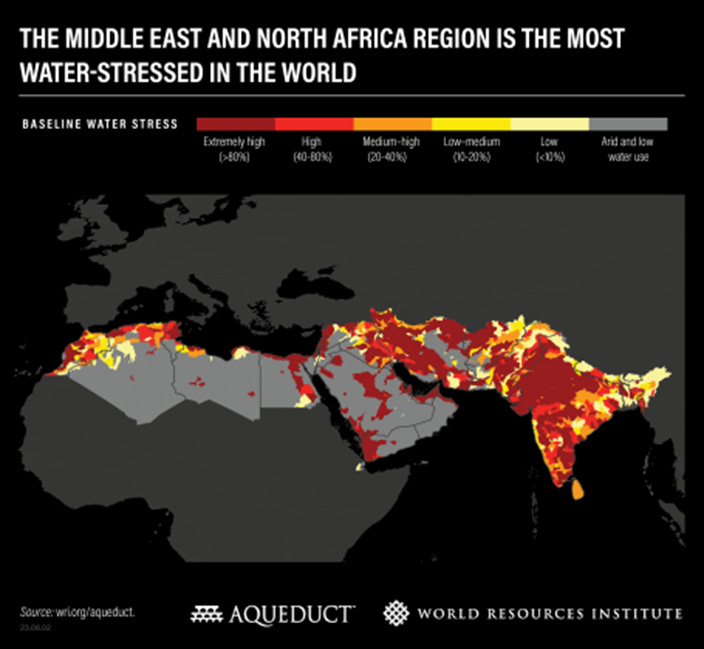
For the Middle East and North Africa, this means 100% of the population will live with extremely high water stress by 2050.
I have some personal exposure to a region in Saudi Arabia called the “Rub Al Khali” or Empty Quarter. When the SAUDIS call something ‘empty’, you know you are in trouble. It made me realize how much of a joke our North American visions of a “desert” are: in our pictures, there are invariably cacti plants and some scrub. In the Rub Al Khali, there are tidal waves of orange sand towering 30 metres above the ground. No. Green. Whatsoever.
By 2050, an additional 1 billion people are expected to live with extremely high water stress, even if the world limits global temperature rise to 1.3 degrees C to 2.4 degrees C (2.3 degrees F to 4.3 degrees F) by 2100, an optimistic scenario.
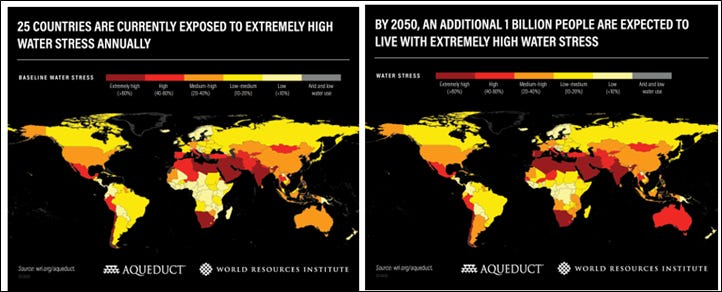
One of the most interesting places to examine is sub-Saharan Africa, where the biggest change in water demand between now and 2050 will occur. While most countries in Sub-Saharan Africa are not extremely water-stressed right now, demand is growing faster there than any other region in the world. By 2050, water demand in Sub-Saharan Africa is expected to skyrocket by 163% — 4 times the rate of change compared to Latin America, the second-highest region, which is expected to see a 43% increase in water demand.
In the middle of the Sahara, the Great Green Wall project is underway — a daring and ambitious plan to establish a line of trees and plants across the desert, from the Atlantic coast to the Red Sea. It has been endorsed by the African Union and involves the countries of Burkina Faso, Djibouti, Eritrea, Ethiopia, Mali, Mauritania, Niger, Nigeria, Senegal, Sudan and Chad. They created the Panafrican Agency of the Great Green Wall (PAGGW).
The main goal of the initiative is to restore 100 million hectares of degraded land, sequester 250 million tonnes of carbon and create 10 million green jobs by 2030 to support communities across the region.
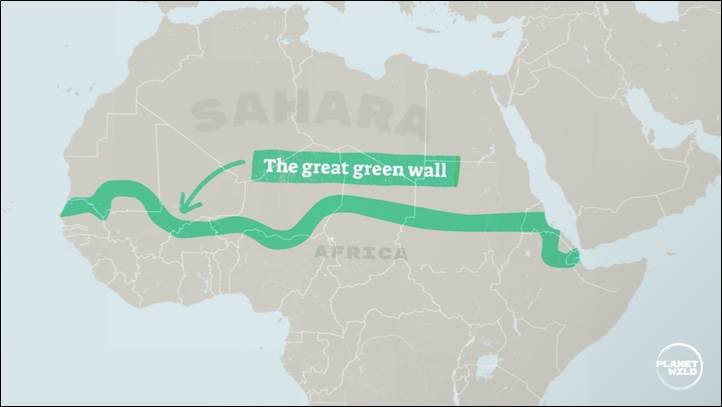
As of 2023, about 18 million hectares or 18% of the target had been restored. Progress on the Great Green Wall has been slow. Challenges such as volatile political situations, war, lack of water, coordination challenges, COVID-19 and lack of community support have hindered progress. So far between 4% and 18% of degraded land has been restored. But despite its slow progress, there is hope and a bright future.
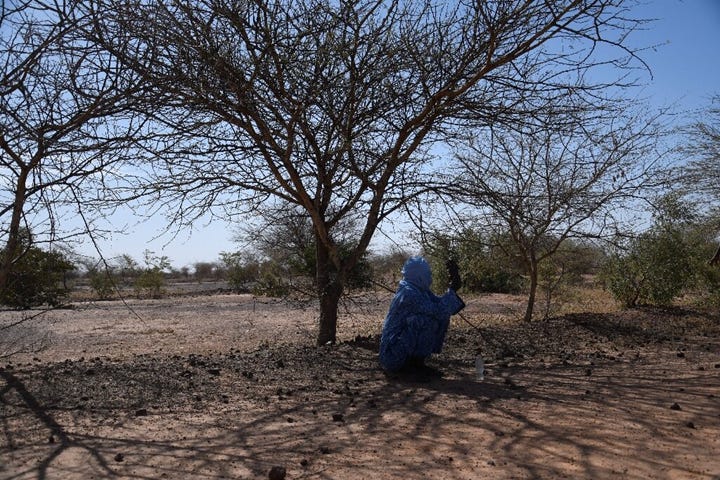
When I was young and stupid — I am now older — I hitch-hiked along a portion of the route that is now becoming the Great Green Wall. It is a sweeping country where the Niger River winds through the sands, forming a foliage fringe in the dryness. Trucks with dried fish head south from the middle of the Sahel towards the coast.
Africa is backwards. Of course, it is shaped like a giant question-mark, so that makes a certain sense.
And in the middle of nowhere, rises the mud-made towers of Timbuktu, home to reservoirs of some of the greatest explorations of human knowledge, from a time when Islam extended roads throughout the world.
The Great Green Wall is only a partial success thus far. War and funding issues have delayed the project. But the ambition is wonderful, and if only one-fifth of it can be done, it will be a boon to the planet.
It will be a boon because tree roots draw rain down into the soil, instead of running off the surface. Moisture would break the desert dryness. Simulations show that the completed tree line could as much as double rainfall within the Sahel and would also decrease average summer temperatures throughout much of northern Africa and into the Mediterranean.
It can happen, because it has happened before, in a natural cycle.
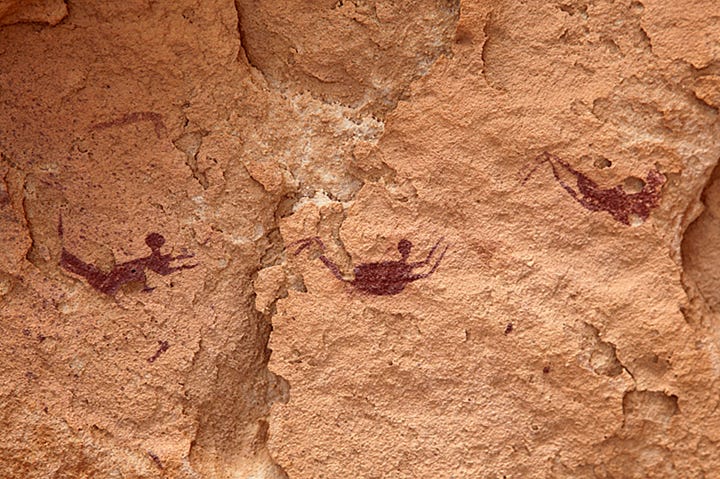
It is yet unknown whether the once-green Sahara was turned to desert through livestock over-grazing or because of periodic sun cycles. But if humankind can deliberately foster a green Sahara, the change could be permanent.
Archaeologist David Wright says that “Humans don’t exist in ecological vacuums. We are a keystone species and, as such, we make massive impacts on the entire ecological complexion of the Earth. Some of these can be good for us, but some have really threatened the long-term sustainability of the Earth.”
An odd paradox today is that while global rainfall is increasing due to the warmer conditions of climate change, rivers are drying out. The drying of the soil through higher temperatures soaks up more of the rain, leaving less for fluid flow through rivers and irrigation canals.
Stretches of the Rio Grande have dried up in regular intervals since 2001 — no doubt to the chagrin of border agents. China’s Yellow River ran dry in 1972, in 1996 and in 1997. Lake Mead — America’s largest reservoir — and the Hoover Dam in the western US have been hit by record droughts. Worse yet, we are overusing ground water in large parts of the world. Water levels are sinking rapidly both in China as well as in India’s Punjab state. Great aquifers, whether in the Sahara or in the southwestern U.S., are being depleted rapidly. This is water that dates from thousands of years ago. Like oil, once gone, it is lost forever.
More than half of the world’s largest lakes and reservoirs are drying up.
An examination of nearly 2,000 of the world’s largest lakes found they are losing about 21.5 trillion litres a year.
That means from 1992 to 2020, the world lost the equivalent of 17 Lake Meads. This is roughly equal to how much water the US used in an entire year in 2015.
More than half of the decline is primarily attributable to human consumption or indirect human activities such as climate warming. The hotter air from the rising temperatures involved in climate warming is sucking more moisture out of the lakes.
2023 has been confirmed as the warmest calendar year in global temperature data records going back to 1850. 2023 had a global average temperature of 14.98°C, 0.17°C higher than the previous highest annual value in 2016.
The changes may seem miniscule but each year they add up…
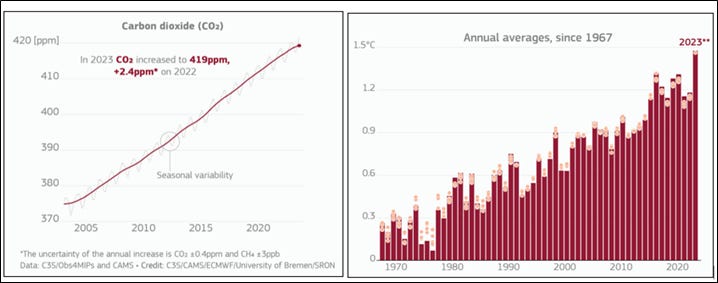
The good news in this is the humans are the agent of change.
We caused it; we can cure it.
The level of difficulty is high, not because the problem is technically challenging but because it is of the nature of a “problem of the commons”. When everyone is responsible, it is hard to generate a movement to stop the cause.
However, an approach being piloted by the non-profit Job One For Humanity may offer a solution.
After describing how the fossil fuel industry deceived the world for so long about the impact of its activities, Job One is proposing a Class Action Suit against the industry. A similar suit against the tobacco lobby led to a payment of billions to the public purse to offset the damage to public health. 150 countries around the world are successfully reducing tobacco use. Smoking has fallen from one in three adults to one in five.
It once seemed that Big Tobacco was invincible; the next moment it was disappearing. These days, it is rare to see someone smoking.
The same can and must happen with greenhouse gas emissions and climate change…the same agents are at work and the same processes are underway. We understand the dynamics of this solution.
We can reverse the impact of global drying and warmer temperatures, and return the planet to a sustainable ecosystem.
It will seem to be impossible until it happens.
Then it will just be a story our children will not believe.
Because who would be so stupid as to burn their house down while they were still in it?
Who indeed…

Written by Barry Gander
To help do something about the climate change and global warming emergency, click here.
Sign up for our free Global Warming Blog by clicking here. (In your email, you will receive critical news, research, and the warning signs for the next global warming disaster.)
To share this blog post: Go to the Share button to the left below.

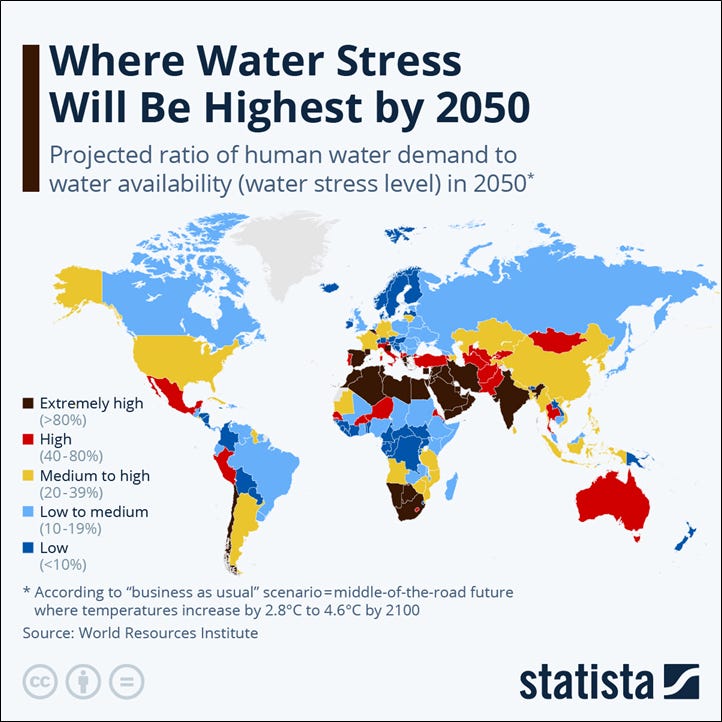
Showing 1 reaction
Sign in with